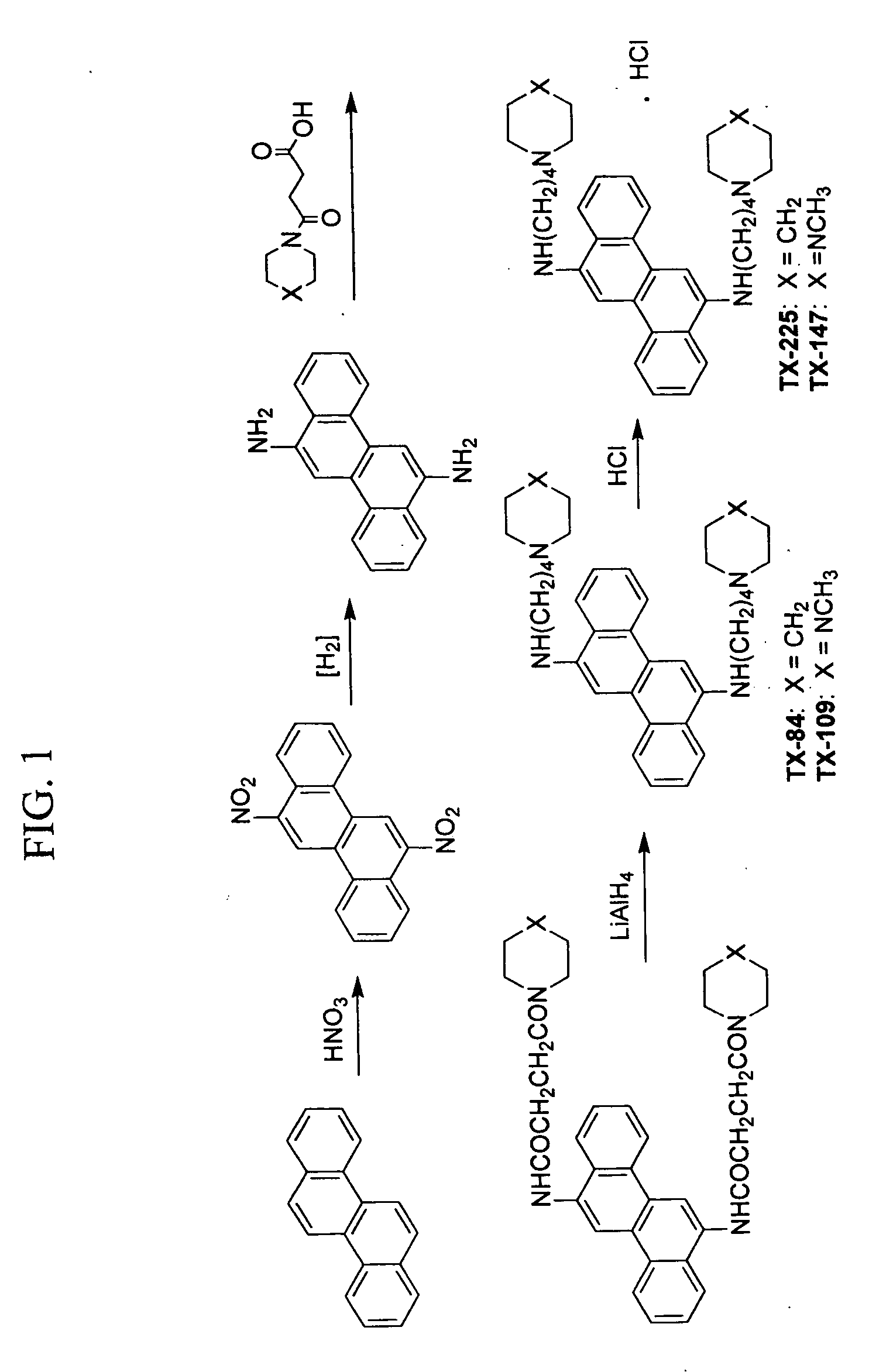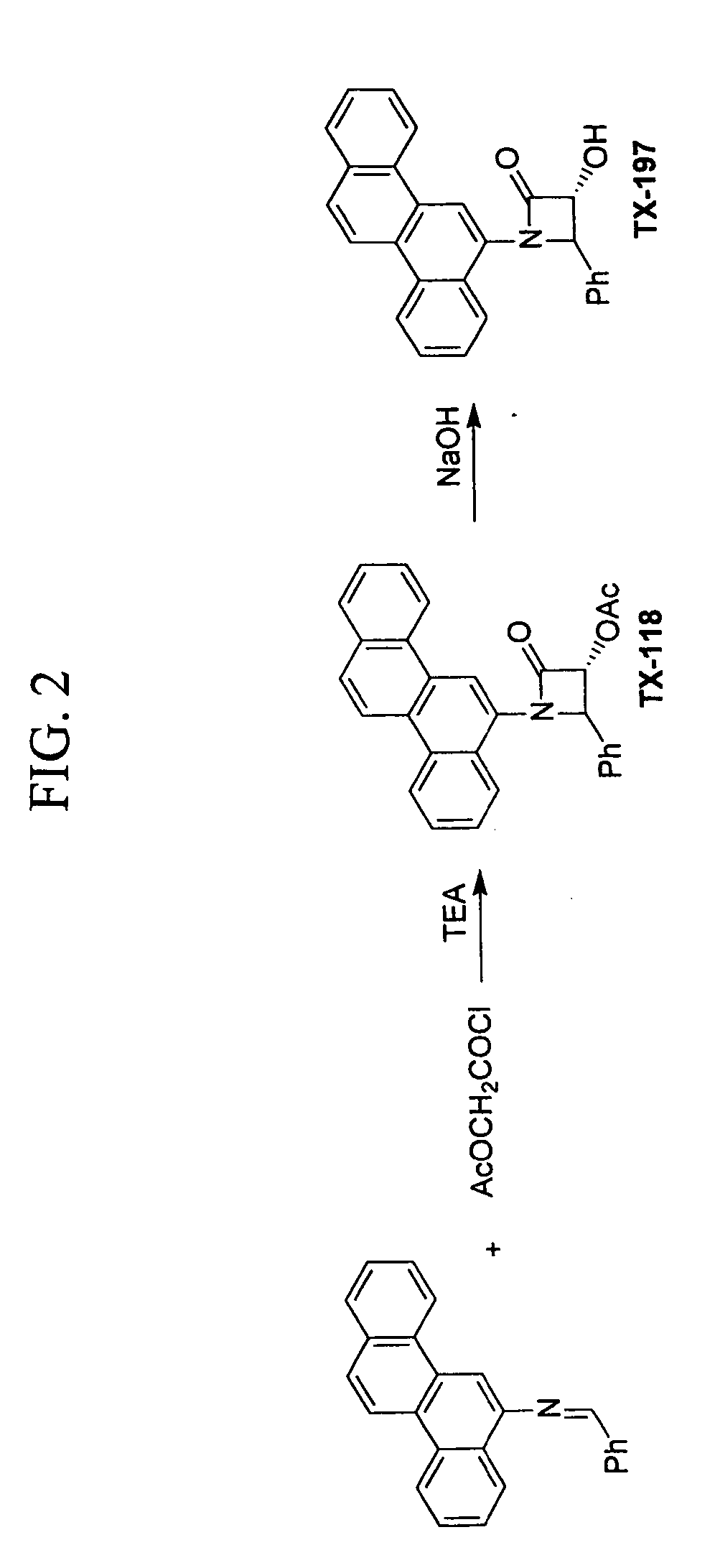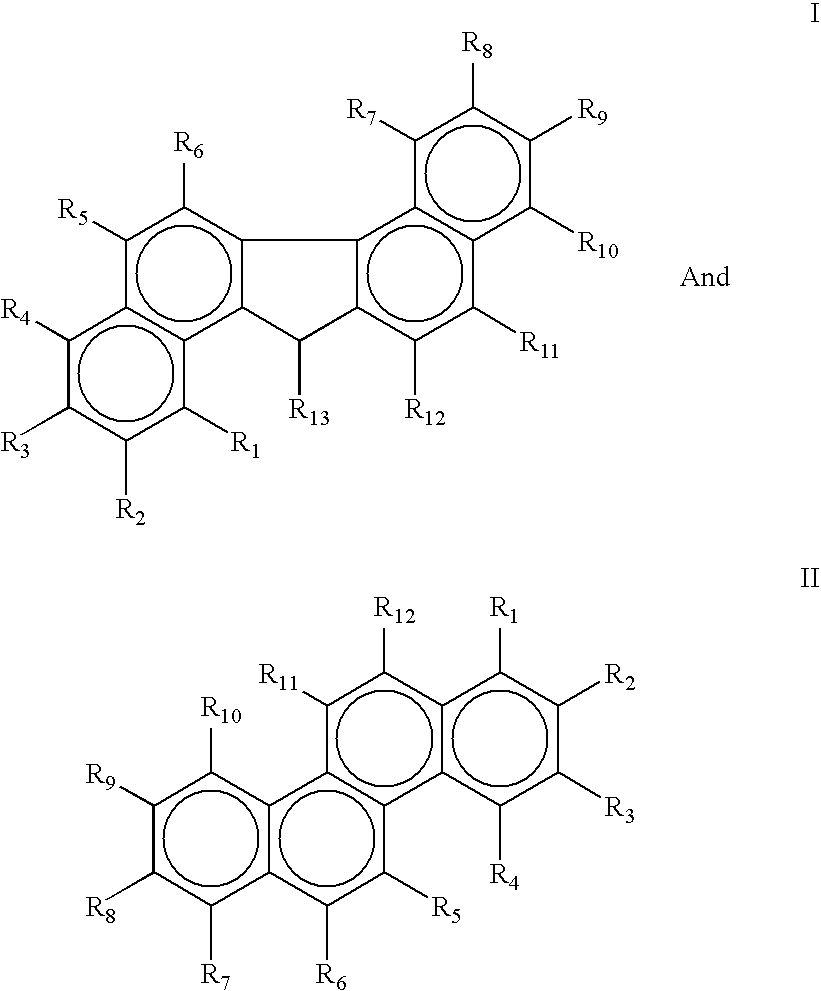Antimicrobial and antiviral compounds
- Summary
- Abstract
- Description
- Claims
- Application Information
AI Technical Summary
Benefits of technology
Problems solved by technology
Method used
Image
Examples
example 1
[0036] Standard NCCLS (e.g., National Committee for Clinical Laboratory Standards) methods for determining MIC (e.g., minimum inhibitory concentration) and MBC (e.g., minimum bactericidal concentration) were used. 96 well micro-well plates were placed in a humid chamber and frozen at −70° C. [BBL Mueller Hinton Broth]. Drugs (e.g., antimicrobial compounds of the present invention) were added to a series of wells through 2 fold serial dilutions. 100 μl of a 2×10−3 M solution of the respective Tx compounds was added to the first well in a series. 100 μl of the inoculum (e.g., microorganism) was added to the well. Thus, the final concentration of a Tx compound in well 1 was 1×10−3 M. The concentration of drug in each successive well in the series from 1-10 had a lower concentration than the previous well in the series. For example, the concentration in well 8 would be less than the concentration of the same drug in well 7. Inoculum (e.g., microorganism) that was added to the wells was ...
example 2
[0064] The MIC of Tx-118, Tx-147, and Tx-197 for certain Staphylococcus aureus (MRSA), Pseudomonas aeruginosa, Stenotrophomonas maltophilia, and VRE Enterococcus faecalis was determined using standard NCCLS methods. The first well in each series of decreasing drug concentrations contained 1×10−4 M of a drug. The drug was diluted by serial two fold dilutions through all 12 wells in a series. There was a final DMSO concentration of 2% in the first well and 1% in the second well, etc. Tests with Tx-118 and Tx-197 were performed in triplicate, and tests with Tx-147 were performed in duplicate. Based on this experiment, compound Tx-147 was active against a broad range of resistant organisms, and was bactericidal at certain concentrations for the Staphylococcus aureus (MRSA) that was tested. Tx-147 has a molecular weight of 784, and the concentration of the drug in wells 1 and 2 that was bactericidal was 78×10−4 μg / ml and 39×10−4 μg / ml. The third and fourth wells corresponded to a concent...
example 3
[0065] Tx-5 and Tx-84 were tested for in vitro efficacy against a chloroquin (CQ) resistant strain of Plasmodium falciparum (Pf). The tests were performed in triplicate at a wide variety of concentrations and evaluated for effect compared with CQ. The results are demonstrated in Table 4, and Tx-84 had a significant inhibitory effect, while Tx-5 had a weak effect. Tx-84 inhibitory effectiveness was greater than that of CQ against Pf.
TABLE 4CompoundIC50 (M)Tx-51.54 × 10−4Tx-84 9.1 × 10−8CQ6.06 × 10−7
PUM
| Property | Measurement | Unit |
|---|---|---|
| Antimicrobial properties | aaaaa | aaaaa |
Abstract
Description
Claims
Application Information
 Login to View More
Login to View More - R&D
- Intellectual Property
- Life Sciences
- Materials
- Tech Scout
- Unparalleled Data Quality
- Higher Quality Content
- 60% Fewer Hallucinations
Browse by: Latest US Patents, China's latest patents, Technical Efficacy Thesaurus, Application Domain, Technology Topic, Popular Technical Reports.
© 2025 PatSnap. All rights reserved.Legal|Privacy policy|Modern Slavery Act Transparency Statement|Sitemap|About US| Contact US: help@patsnap.com



